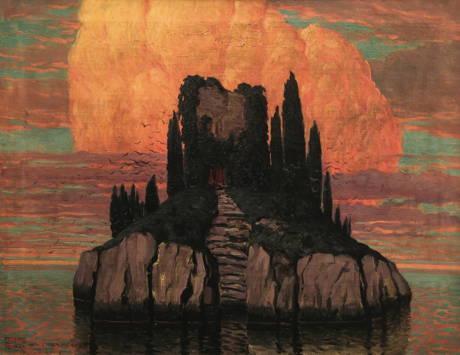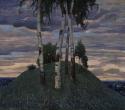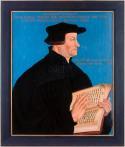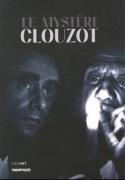Art Of The Day Weekly
#501 - from 8 February 2018 to 14 February 2018

Teodoro Wolf Ferrari, The Mysterious Island, 1917, oil on canvas, 76x97 cm, private collection (exhibition in Conegliano).
IN THE AIR
10 exhibitions to warm us up under the February snow
In less than two days, 10 exhibitions will be opening throughout Europe. We have listed them here below, and have even left others out! A full day’s work – every day of the week- no longer suffices to follow all that goes on in the world of art. It would require moonlighting, and more! What is most surprising is the quality of the offer, whether it’s a well-organized retrospective or a controversial or unexpected subject, an enlightening remark on God, images or the impact of a major poem by T.S. Eliot. Here are a few indications to follow while the European continent hibernates. Aesthetes such as Mérimée or Bernard Berenson had to cross this same continent to discover an exhibition – rather rare at the time- or a chapel, and would only have the image would only be revealed after a long pilgrimage. The magic of Internet allows us to unveil certain secrets without moving from our chair, by simply clicking on links. Whether that is progress, or not, is another debate on the status of images, the way we consume them, or even their length of life in our connected society.
AN ITALIAN REDISCOVERY

Teodoro Wolf Ferrari, Landscape with birches and cypresses, 1907, oil on canvas, 26x38 cm, Galleria Arte Cesaro, Padova.
Wolf Ferrari, a delicious decadence
CONEGLIANO – We automatically think of Swiss painter Böcklin and his famous Isle of the Dead when looking at the works of Venetian artist Teodoro Wolf Ferrari (1878-1945). That is quite natural. The latter studied in Munich, and in his younger years absorbed all Symbolist and decadent influences. He applied them to his paintings of landscapes in which spirits filter through heavy leaden skies, crashing waves, and the leaves of silver birches. Wolf Ferrari was ill known in his own country, even less so abroad. He was from an elegant family, in which a brother was a composer. He once shared the stage with Klimt who greatly influenced him: in 1910, in Venice, where Klimt was at the Biennale while Wolf Ferrari was at Ca’ Pesaro. At the end of his life he relentlessly drew the soft foothills of the Venetian region.
• Teodoro Wolf Ferrari, la modernità del paesaggio, at Palazzo Sarcinelli, from 2 February to 24 June 2018.
REFORMATION IN SWITZERLAND
Against the images
ZURICH - In Florence, the Uffizi Gallery study the mysterious relationship between the Medici family and the Reformation, while in Berlin the Martin Gropius Bau looks closely at the “Luther effect”: all these initiatives are legitimate for the 500th anniversary of the reformist’s 95 thesis. This specific exhibition does not fit in exactly to the calendar, but it looks at a recurring theme in the life of religions, that is the rapport to images. While Islam today seems to lead this fear, we owe the word iconoclasm to the Byzantines. In Zurich, when Zwingli produced his own 63 theses in 1523, preachers were also seized by a “iconoclastic fury” in which they threw all sculptures and altarpieces out of the churches. But we always need icons: after Zwingli died, his own sword and helmet were placed on that pedestal.
• God and the pictures, at the Landesmuseum, from 2 February to 15 April 2018.
ABOUT THE WASTE LAND

Paul Nash, The Shore, 1923, oil on canvas, Leeds Museums and Galleries (Leeds Art Gallery) U.K. / Bridgeman Images
In the footsteps of T. S. Eliot
MARGATE - En 1922, a monument of XXth century English poetry rolled off the presses: The Waste Land by T. S. Eliot, which summed up an ill feeling that was both personal, due to the disintegration of his marriage, and proper to his post-war generation. Before finishing writing it, Eliot had spent a few weeks at the seaside, in Margate. The curators of the exhibition carried out an original experience on the site itself. They invited residents of all ages to reread the book, to examine themselves in light of the work, and to explore the works of art that echo these poems. The result is a group of paintings, sculptures, photographs and videos by artists as different from one another as Berenice Abbott, William Blake, Leonora Carrington or even Eduardo Paolozzi.
• The Waste Land, at Turner Contemporary, from 3 February to 7 May 2018.
FROM BILBAO TO STOCKHOLM
Michaux, spidery stains
BILBAO – He is known mostly for his poetry, but graphic creation absorbed him even more: for half a century, Henri Michaux blackened paper, sometimes under the influence of psychotropic substances such as mescaline. The exhibition brings together a very wide selection.
• Henri Michaux, de l’autre côté, at the Guggenheim Museum, from 2 February to 15 May 2018.
Kjartansson plays Paoli for us
CARDIFF - Il Cielo in una stanza is a famous Italian song, written in 1960 by a brilliant, 25 year-old song writer, Gino Paoli, who would go on to be one of the most brilliant singers in the period after the Second World War. The Icelandic artist used this hit as the basis of a performance on a XVIIth century organ.
• Ragnar Kjartansson, The Sky in a Room, at the National Museum, from 3 February to 11 March 2018.
Mythic ocean liners
LONDON – During the Belle Epoque and the Roaring 20s they had their days of glory, and the most beautiful of them, such as the Normandie, are associated with Art déco even if they were operational above all during the XIXth century. This retrospective brings back to life the famous “ocean liners”, including the Titanic, with its highly varied objects, from the propellers to the furniture, including the Goyard trunks of the Prince of Wales.
• Ocean Liners, at the Victoria & Albert Museum, from 3 February to 17 June 2018.
Itinerary of a “degenerate”
MUNICH – The Nazis stamped Fritz Winter (1905-1976) as a degenerate artist. He was a student at the Bauhaus, taught among others by Kandinsky and Klee. He developed a personal form of abstraction. The exhibition shows a selection from the 30s and 40s.
• Fritz Winter, à la Pinakothek der Moderne, from 3 February to 10 June 2018
Pure colours
PONT-AVEN – The school of Pont-Aven, of which Gauguin was the heart and soul, had a cult for pure colors. The recently renovated museum will host for a whole year a private collection of 23 paintings, that of Alexandre Mouradian, that includes works by stars such as Emile Bernard and Sérusier, as well as lesser-known artists, such as Jean Verkade or Roderic O’Conor.
Pont-Aven, berceau de la modernité, la collection Mouradian, at the musée de Pont-Aven, from 2 February 2018 to 6 January 2019.
The gouaché, prior to the jewel
ROUBAIX – Before making a piece of jewelry in gold and precious stones, it is necessary to draw it. That phase of a technical sketch, what is called the “gouache”, is the object of this exhibition, starting with a local collection, that of jeweler Dael & Grau, between 1900 and 1950.
• Les gouachés : un art unique et ignoré, at la Piscine, from 3 February to 1 April 2018.
Golds by Lygia Pape
STOCKHOLM – Brazilian magician Lygia Pape (1927-2004), an apostle of concrete art, and recreates the golden rays of the sun even in dark interiors, is celebrated here with her installation Ttéia 1.
• Lygia Pape, Ttéia 1, C, at the Moderna Museet, from 2 February to 13 May 2018.
BOOKS
The other Clouzot
"But you yourself are a painter?", André Parinaud asked him in 1956. He answered, with false modesty, "Hardly, proof of this is the fact that I like the paintings of others." That was of comon knowledge, simply based on his Mystère Picasso, which became a reference film, shot in 1955 at the studios de la Victorine in Nice under a scorching sun that exhausted the Andalusian painter. The real discovery in this catalogue, that accompanies the exhibition open at the Cinémathèque française until the month of July, is the number of talents of this artist accused of being sadistic. He took photographs of beautiful nude women, but not only that. His way of framing his shots and of staging them are clear. His stroke when drawing was somewhere between Picasso, Cocteau and Calder. The book reviews his whole career, his relations with the world of art - who remembers that Siné drew the press kit for his movie Espions in 1957 ? - and the remarkable movie technicians who accompanied him, among them the decorators Max Douy and René Renoux. A useful chronology would have been most welcomed.
•Le mystère Clouzot, under the direction of Noël Herpe, Liénart/Cinémathèque française, 2017, 216 p., €29.
OPENINGS OF THE WEEK

ART CAPITAL
14 February 2018 - PARIS - Grand Palais
Several artists fairs under the same roof at the Grand Palais


